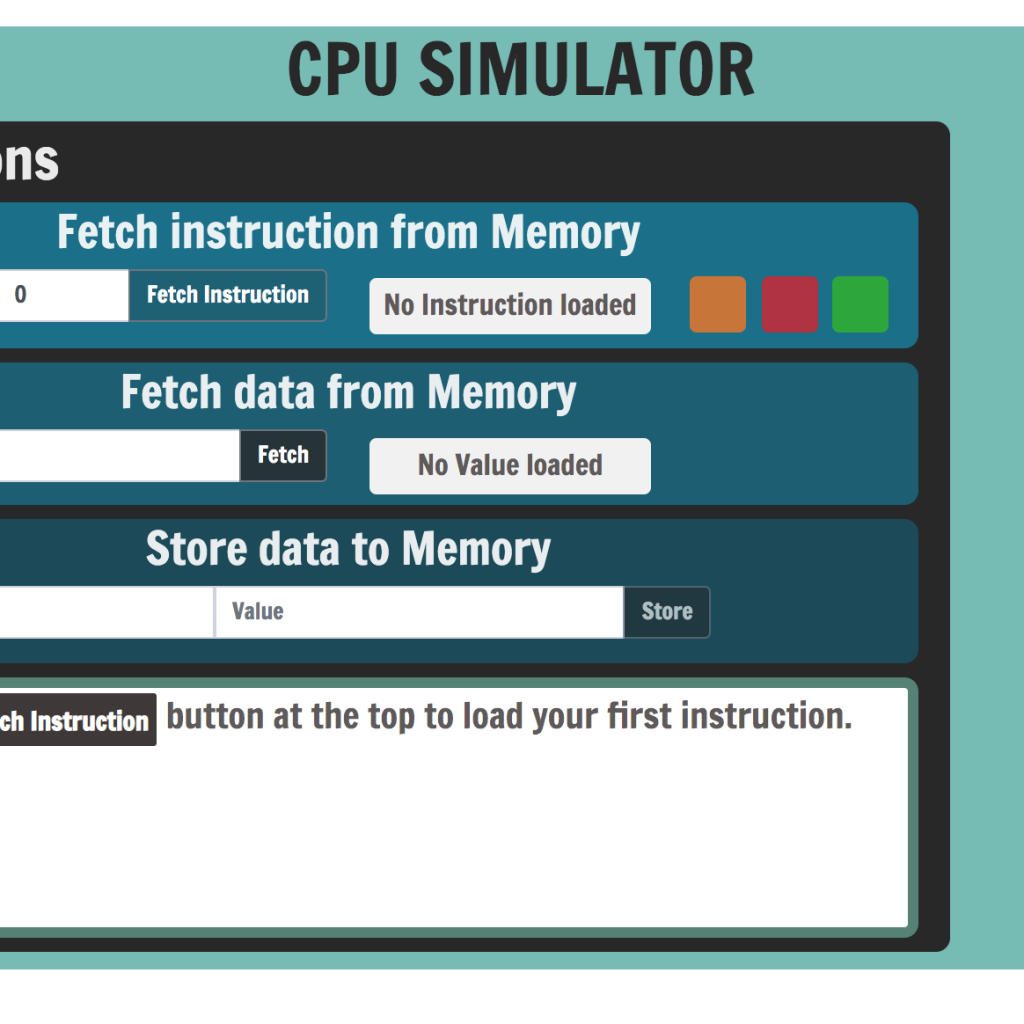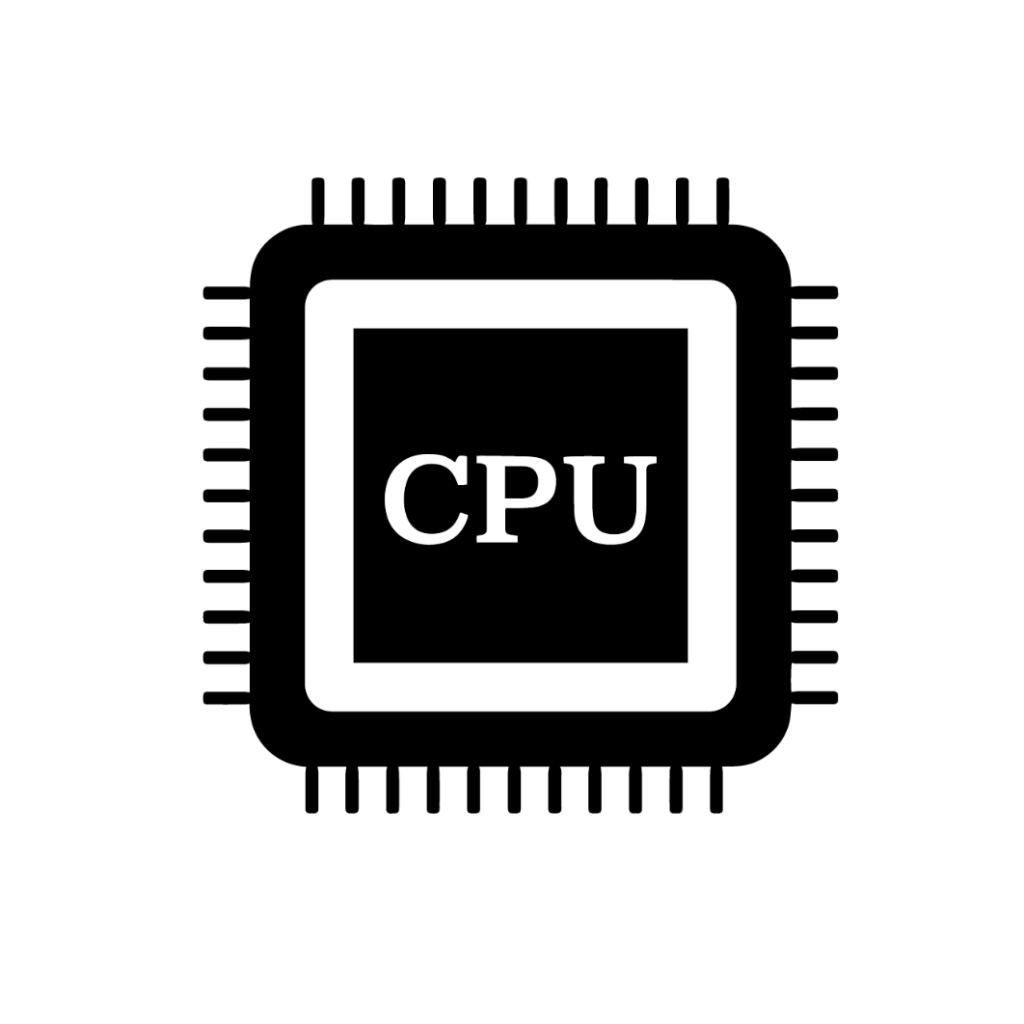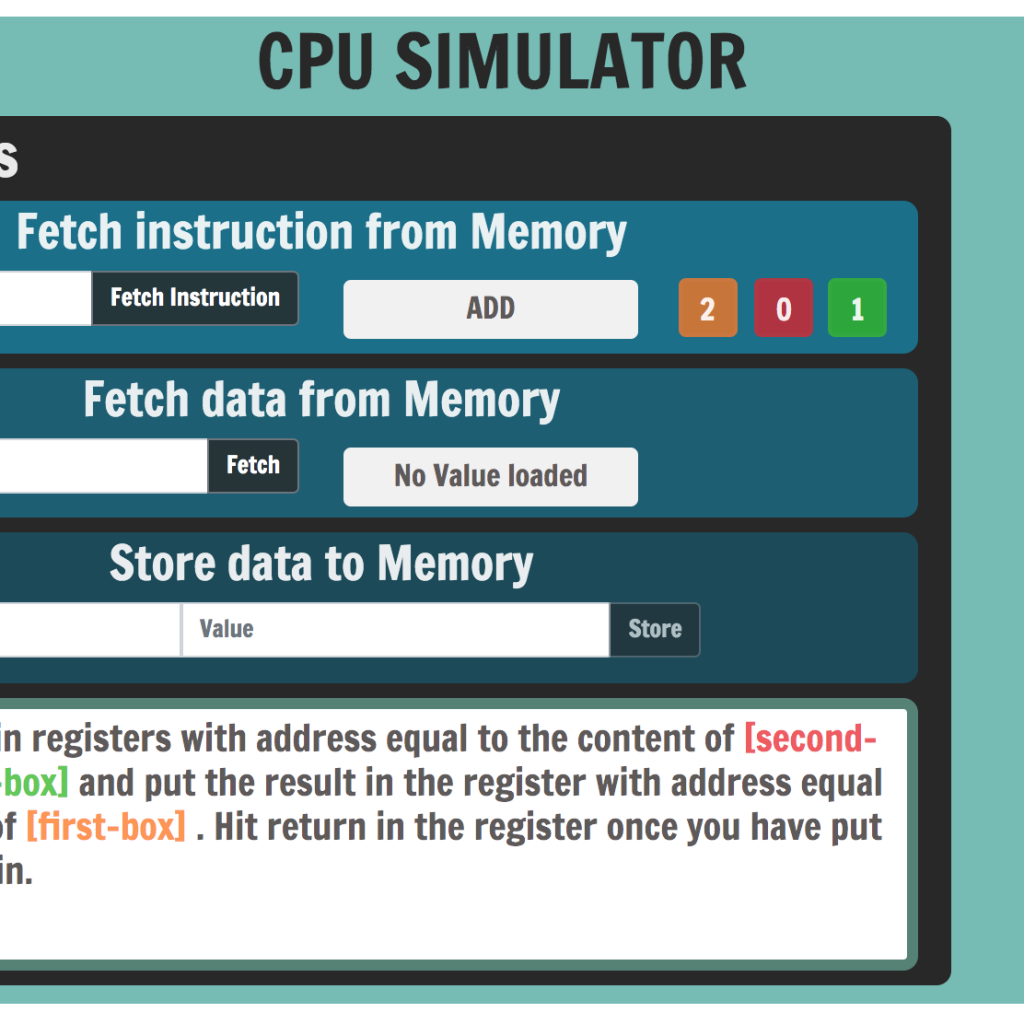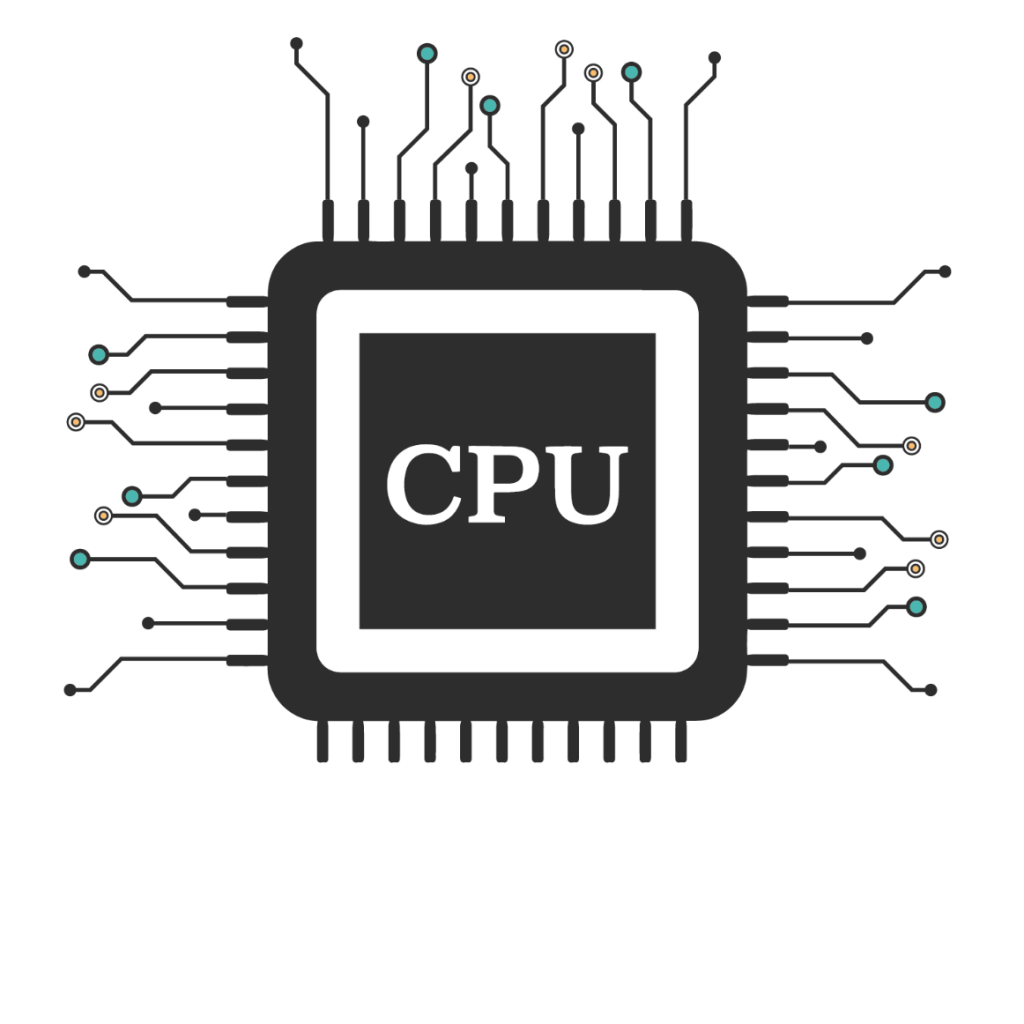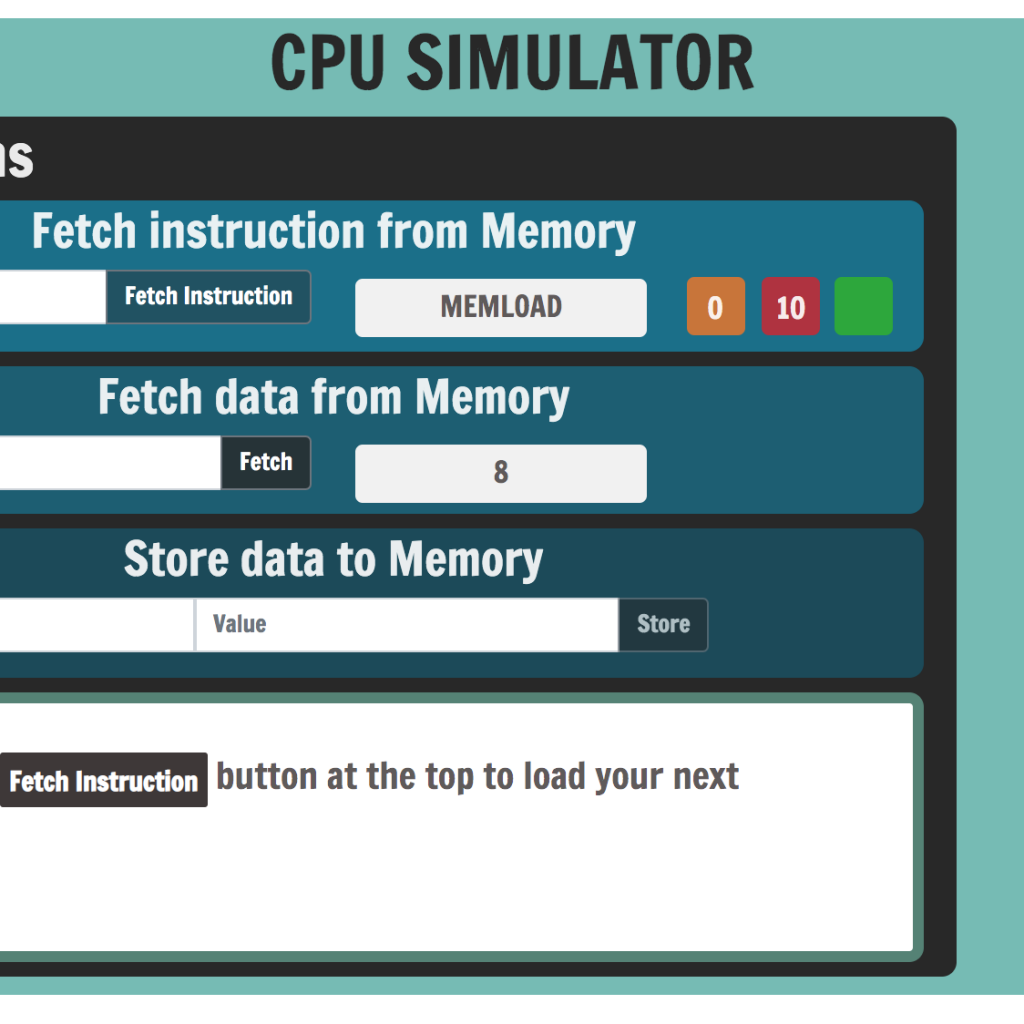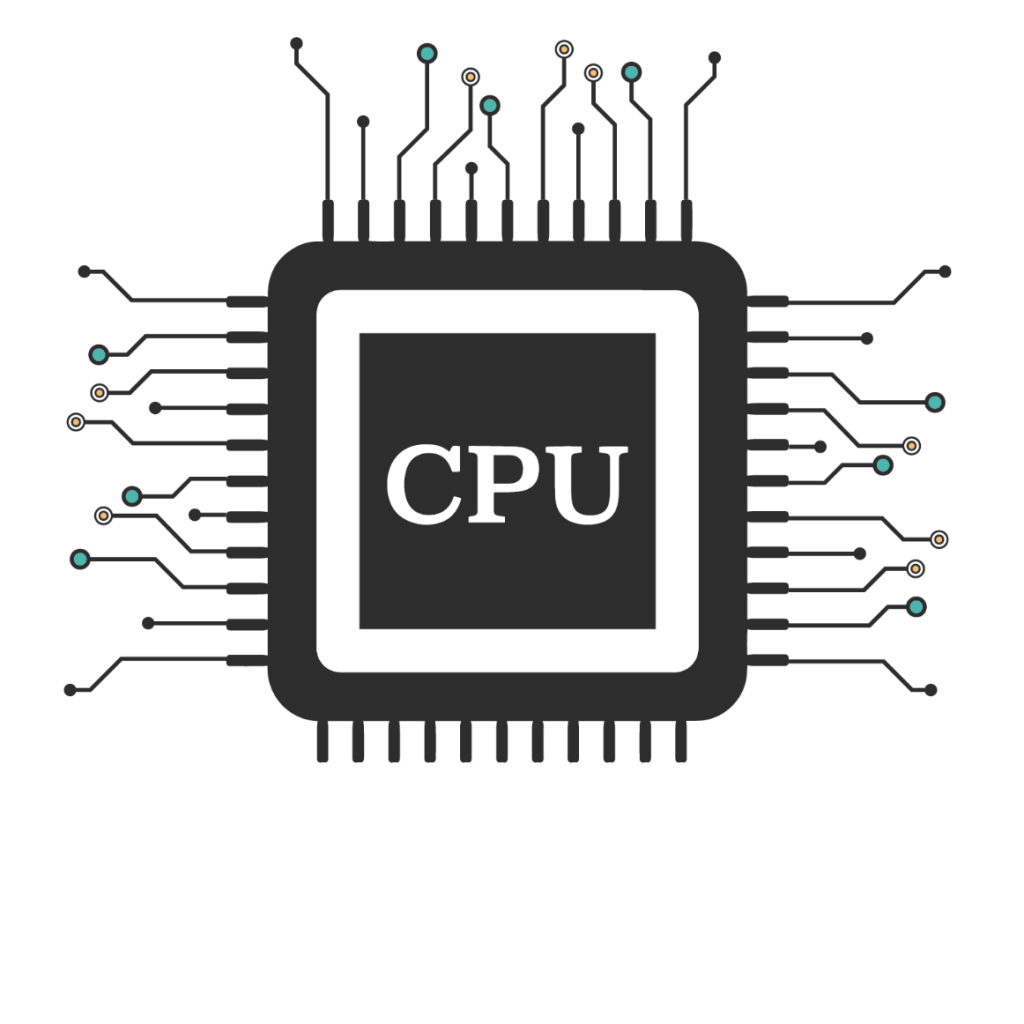
Name: CPU Simulator
Tech: HTML5, CSS3, Javascript, Bootstrap, jQuery
Platform: Desktop & Tablet Devices
Available Version: Try the CPU simulation
Game Type
The “CPU Simulator“ interactive learning environment is a graphical abstraction of how a CPU performs different operations inside a computer.
This is a learning based system but should be integrated with additional resources previous to exploring it. Furthermore, it can be used as an exercise environment for the basic operations of a CPU.
Description
CPUs are very tiny, yet complex, electronic circuits within a computer that executes instructions that make up a computer program. The CPU interacts closely with primary storage, or main memory, referring to it for both instructions and data. Electric signals determines the output of tiny transistors installed in the CPU, deciding therefore the type of operation to execute. Against this background, it is extremely hard to explain the concept and abstraction behind CPUs without the aid of concrete systems. The “CPU Simulator” simulation is an interactive learning environment aimed at better understanding the complexity and utility of CPUs within a computer system. The game puts the players in the shoes of a computer CPU which has to correctly execute basic instructions such as memory fetch, additions, store data, and multiplications. The game aims to create a very high-level mental model of how CPUs operates. The plugin adopts a progressive guided game level approach with progressive difficulty-tasks to resolve and execute.
Terminal Learning Objectives
This interactive learning environment has the following TLO:
- Create an abstract mental model of Central Processing Units
- Understand the basics of how CPUs operate in relation to memory
- Understand how basic binary operations can be so powerful
Game Design Values
- Experience: The “CPU Simulator” interactive learning environment is a Role-Playing, Puzzle educational game which allows the players to partially visualise the complexity of how the CPU operates with the use of simple game elements.
- Theme: Players take the shoes of a computer CPU and need to follow guided exercises in order to execute computer basic operations.
- Point of View: The game is presented as a 2D environment containing images, dynamic content, and UI buttons. The game space is very compact and divided according to the CPU different operations.
- Challenge: The main challenge is to follow the system instructions and successfully complete CPU basic operations. Tasks need to be fetch from the CPU interface and completed accordingly. Players are asked to fetch and store data from memory, and read and write in memory registers.
- Decision-making: Decisions do not happen in real-time. Players can take their time to complete a task but cannot progress to the next one without first completing the previous. Multiple attempts are allowed.
- Skill, strategy, chance, and uncertainty: The game does not assign a score based on players performances. Skills are required to correctly assign and retrieve resources. There are no elements of chance or uncertainty as the tasks repeat on a fresh run of the game.
- Context: The simulation is run as a web application. It has been used as part of interactive formative learning material on E-learning platforms like Coursera and as part of on campus teaching at Goldsmiths, University of London.
- Emotions: The “CPU Simulator” is meant to generate a feeling of excitement, discovery, and completion. Progressive difficulty-tasks keep players entertained in reaching the end of the simulation.
